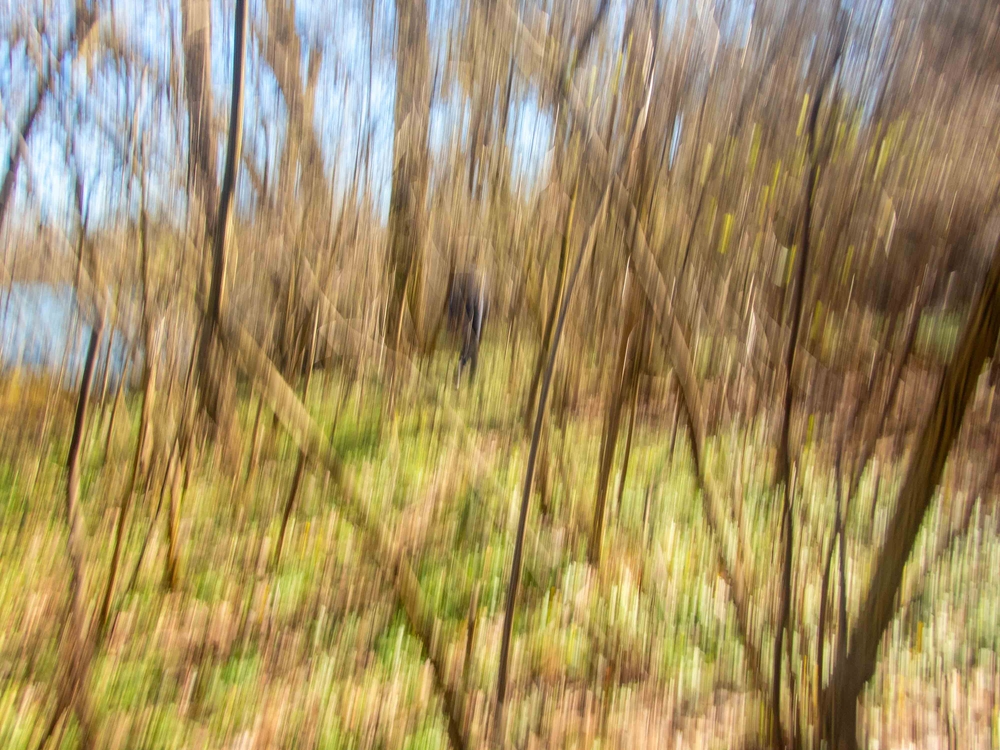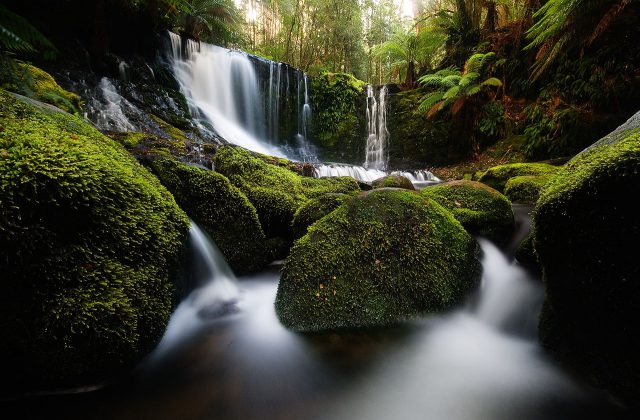Do you want to learn new and creative photography techniques? If so, deliberate camera movement could be just what you’re looking for.
Intentional camera movement, or ICM, is a photography technique in which the photographer moves the camera purposefully throughout the exposure to produce an impression of motion or blur in the image.
Intentional camera movement is a fun and creative approach to play with your photography. It can be used to create abstract and impressionistic photographs, as well as to capture motion and energy in a scene.
In this blog post, we’ll explore the basics of intentional camera movement in photography. We’ll discuss what it is, how it differs from other techniques, and how you can use it to create unique and interesting images. We’ll also share some tips and tricks for successful intentional camera movement photography.
So if you’re ready to take your photography to the next level and try something new, read on to learn more about intentional camera movement in photography!

Photo by Depositphotos
Explanation of intentional camera movement
Intentional camera movement, or ICM, is a technique used in photography to create a sense of motion or blur in an image. This is achieved by deliberately moving the camera during the exposure. The result is an image that captures the movement of the camera, rather than freezing a moment in time.
Intentional camera movement is different from other techniques that create blur or motion in an image. For example, panning involves moving the camera to follow a moving subject, while ICM involves moving the camera independently of the subject.
Similarly, long-exposure photography can create blur by keeping the shutter open for an extended period of time, while ICM creates blur through the movement of the camera.
In summary, intentional camera movement is a creative technique that can be used to add motion and energy to your images. By deliberately moving the camera during the exposure, you can create unique and interesting effects that are not possible with other techniques.

Photo by Depositphotos
The creative possibilities of intentional camera movement
Intentional camera movement, or ICM, offers a wide range of creative possibilities for photographers. By deliberately moving the camera during the exposure, you can create unique and interesting effects that are not possible with other techniques.
One of the main creative possibilities of intentional camera movement is the ability to create abstract and impressionistic images. By moving the camera in different ways during the exposure, you can create images that are more about color, shape, and texture than about representing a specific subject.
Another creative possibility of ICM is the ability to capture motion and energy in a scene. By moving the camera in a way that follows or contrasts with the movement of the subject, you can create images that convey a sense of motion and dynamism.
Finally, intentional camera movement allows for a high degree of creative control and experimentation. By varying the speed, direction, and duration of the camera movement, you can create a wide range of different effects. This makes ICM a fun and rewarding technique to explore and experiment with.

Photos by Depositphotos
Camera settings for intentional camera movement
When it comes to intentional camera movement or ICM, the camera settings you use will play a big role in the final result. Here are some tips for choosing the right camera settings for ICM:
- Shutter speed: A slow shutter speed is essential for ICM. This will allow you to capture the movement of the camera during the exposure. Experiment with different shutter speeds to find the right balance between motion blur and sharpness.
- Aperture: A narrow aperture (high f-stop number) will help to increase the depth of field and keep more of the image in focus. This can be useful when you want to create a sense of motion while still maintaining some sharpness in the image.
- ISO: Keep the ISO as low as possible to minimize noise and grain in the image. This is especially important when using slow shutter speeds, as the sensor will be exposed to light for a longer period of time.
- Image stabilization: Turn off any image stabilization features on your camera or lens. These features are designed to counteract camera movement, which is the opposite of what you want when doing ICM.
In summary, choosing the right camera settings is an important part of successful intentional camera movement photography. Experiment with different settings to find the right balance between motion blur and sharpness, and don’t be afraid to try new things.

Image by Paul Edney from Pixabay
Different methods for creating intentional camera movement
There are several different methods that you can use to create intentional camera movement in your photography. These include panning, zooming, rotating, and shaking. Each method creates a different effect and can be used to achieve a wide range of creative results.
- Panning: Panning involves moving the camera horizontally to follow a moving subject. This creates a sense of motion in the image and can be used to capture subjects such as cars, bicycles, or runners in motion.
- Zooming: Zooming involves changing the focal length of the lens during the exposure. This creates a sense of motion towards or away from the subject and can be used to create dynamic and dramatic images.
- Rotating: Rotating involves turning the camera around its axis during the exposure. This creates a sense of spinning or swirling motion in the image and can be used to create abstract and impressionistic images.
- Shaking: Shaking involves moving the camera in a random or chaotic manner during exposure. This creates a sense of chaos and unpredictability in the image and can be used to create abstract and experimental images.

Photo by Attila Ataner on Unsplash

Photo by Depositphotos
Creative Applications of Intentional Camera Movement
There are many creative applications of ICM, the following are some examples:
1- Abstract photography:
ICM can be used to create abstract images that focus on color, shape, and form rather than recognizable objects. By moving the camera in different ways, you can create images that are open to interpretation and convey a sense of mystery. Try using bold colors and strong lines to create striking abstract images.
2- Impressionistic photography:
ICM can also be used to create impressionistic images that capture the essence of a scene rather than its details. By using slower shutter speeds and moving the camera in a controlled way, you can create images that resemble impressionist paintings. Look for scenes with strong colors and interesting light to create beautiful impressionistic photographs.
3- Capturing motion and energy:
ICM is a great way to capture motion and energy in your photographs. By moving the camera in sync with your subject, you can create images that convey a sense of movement and dynamism. This technique works well for sports, dance, and other action photography. Experiment with different shutter speeds and movements to find the right balance between motion blur and sharpness.

Photo by Ehab Amin

Photo by Lisa Fotios
Remember, ICM is all about experimentation and creativity. Don’t be afraid to try new things and see what works best for you. With practice and patience, you can create stunning images using this technique.
Tips for Successful Intentional Camera Movement Photography
Intentional Camera Movement (ICM) is a creative technique in photography that involves moving the camera during exposure. This can create unique and artistic images that capture motion and convey a sense of dynamism. Here are some tips for achieving successful ICM photography:
1- Experimentation and practice:
ICM is all about experimentation. It’s important to try different movements, shutter speeds, and subjects to see what works best. Practice makes perfect, so don’t be afraid to take lots of shots and learn from your mistakes. Try panning, zooming, and rotating the camera to create different effects.
2- Choosing the right subject matter:
Not all subjects are suitable for ICM photography. Look for subjects with strong lines, shapes, or colors that will create interesting patterns when the camera is moved. Landscapes, architecture, and abstract subjects can work well. Avoid subjects with too much detail or clutter, as they can become confusing when the camera is moved.
3- Balancing control and spontaneity:
ICM photography involves a balance between control and spontaneity. You need to have some control over the camera movement to create a pleasing image, but you also need to allow for some spontaneity to capture the unexpected. It’s a delicate balance that takes practice to master. Try using a slower shutter speed to allow for more movement, but also experiment with faster speeds to see what works best.
Remember, ICM photography is all about having fun and being creative. Don’t be afraid to experiment and try new things. With practice and patience, you can create stunning images using this technique.

Photo from Pixabay
Works of famous ICM photographers
Intentional Camera Movement in Photography, or ICM for short, is a technique that has been used by many famous photographers to create stunning and unique images.
-
Michael Orton
He is known for his dreamy and ethereal images that have a soft and romantic feel. Orton’s technique involves taking two images, one in focus and one out of focus, and then blending them together to create a unique and beautiful image.

-
Ernst Haas (1921-1986)
Haas was a German-American photographer who is best known for his work in photojournalism and fashion photography. He also experimented with ICM, and his images are some of the most iconic examples of the technique.

-
Chris Friel (born 1952)
Friel is a British photographer who is known for his use of ICM to create abstract and dreamlike images. His work has been exhibited in galleries and museums around the world.

-
Douglas Barkey (born 1954)
Barkey is an American photographer who is known for his use of ICM to create images that explore the relationship between light and movement. His work has been exhibited in galleries and museums around the world.

-
Erik Malm (born 1971)
Malm is a Swedish photographer who is known for his use of ICM to create images that explore the natural world. His work has been exhibited in galleries and museums around the world.

Conclusion
A photographic technique known as intentional camera movement (ICM) involves moving the camera purposefully while it is being exposed in order to produce a blurred or abstract image. This method can result in beautiful, distinctive pictures that, in a manner that standard photography cannot, capture the essence of a scene.
ICM enables photographers to experiment with various movements to produce a wide range of effects, such as panning, tilting, or spinning the camera.
Photographers can manage the degree of blur and depth of field in an image by altering the shutter speed and aperture.
Thanks for reading, I hope you enjoyed the article, in case you have any questions just drop them below & I will be happy to answer you.
The featured Photo by Chait Goli
If you enjoy the site, don’t forget to subscribe, we will only inform you when a new article is posted.









beautiful pictures, I love the effect ICM has with the camera, I will have to experiment the next time I head out to do some shots. This is definitely a fun idea to try. I wonder how the different cameras will work with this method. I am not a professional, but I do love trying new ideas with my camera. I wonder if it will work with your phone camera if you tweak the settings. Probably not, just a thought.
Thank you for your comment! I’m glad to hear that you found the ICM technique interesting and that you’re excited to experiment with it. It’s always great to try new things and see what kind of creative results you can achieve. As for different cameras, ICM can work with any camera that allows you to control the shutter speed and aperture settings. However, the results may vary depending on the camera and lens you’re using.
As for phone cameras, it’s possible to achieve a similar effect by using apps that allow you to manually adjust the camera settings. However, the results may not be as good as with a dedicated camera due to the limitations of phone camera sensors. Nonetheless, it’s always worth experimenting and seeing what kind of results you can achieve with the tools you have. If you have any questions or if there’s anything else I can help you with, please don’t hesitate to ask. Good luck with your photography!
The article does an excellent job of explaining what intentional camera movement (ICM) is and how it can be used to achieve various creative effects. It emphasizes the importance of embracing experimentation and allowing the camera movement to paint a beautiful abstract or impressionistic picture.
I appreciate how the article provides practical tips and techniques for capturing compelling ICM images. The step-by-step instructions, accompanied by sample photographs, make it easier for readers to understand and apply the concepts discussed. Additionally, the inclusion of recommended camera settings and equipment suggestions is helpful for photographers who are new to ICM and want to achieve the best possible results.
“Intentional Camera Movement in Photography” is a captivating article that encourages photographers to step out of their comfort zones and explore the creative possibilities of ICM. The informative content, practical tips, and inspiring examples make it a valuable resource for photographers at any skill level.
Thank you for your thoughtful comment! I’m glad to hear that you found the article on intentional camera movement (ICM) informative and helpful. It’s always great to hear that my writing has inspired to try new techniques and experiment with their photography. I believe that embracing experimentation and allowing the camera movement to paint a beautiful abstract or impressionistic picture can lead to some truly stunning and unique images. I’m happy to hear that the step-by-step instructions and sample photographs were helpful in understanding and applying the concepts discussed. If you have any questions or if there’s anything else I can help you with, please don’t hesitate to ask. Thank you for taking the time to leave such a thoughtful